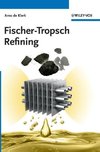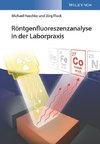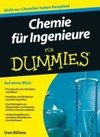
-
 Anglický jazyk
Anglický jazyk
Fortschritte der Chemie organischer Naturstoffe / Progress in the Chemistry of Organic Natural Products
Insect Pheromones: A Critical Review of Recent Advances in Their Chemistry, Biology, and Application.- I. Introduction.- II. Structure Elucidation.- A. Isolation.- B. Identification.- III. Synthesis.- A. Coleoptera.- B. Diptera.- C. Homoptera.- D. Hymenoptera.-... Viac o knihe
Na objednávku, dodanie 2-4 týždne
49.49 €
bežná cena: 54.99 €
O knihe
Insect Pheromones: A Critical Review of Recent Advances in Their Chemistry, Biology, and Application.- I. Introduction.- II. Structure Elucidation.- A. Isolation.- B. Identification.- III. Synthesis.- A. Coleoptera.- B. Diptera.- C. Homoptera.- D. Hymenoptera.- E. Isoptera.- F. Lepidoptera.- G. Orthoptera.- IV. Stereobiology.- A. Geometric Isomers.- B. Enantiomers.- C. Chemorecognition.- V. Biosynthesis.- A. Exposure of Bark Beetles to Pheromone Precursors.- B. Hormonal Influence on Pheromone Production.- C. Possible Role of Mixed-Function Oxidases.- D. Possible Involvement of Microorganisms in Pheromone Synthesis.- E. Biosynthesis of the Bicyclic Ketals.- F. Boll Weevil Sex Attractant.- G. Miscellaneous Labelling Studies.- H. Dietary Origin of Pheromones.- VI. Chemosystematics and Speciation.- VII. Practical Applications: Status and Projections.- A. Plea for Sanity and Integrated Pest Management.- B. Forest and Shade-Tree Insect Pests.- C. Orchard and Vineyard Insect Pests.- D. Field Crops Insect Pests.- E. Stored Products Insect Pests.- F. Pests That Directly Afflict Humans or Animals.- G. Pheromone Formulations.- VIII. Conclusion.- Addendum.- References.- The Structural Polymers of the Primary Cell Walls of Dicots.- I. Introduction.- A. Why Study the Structure of Cell Walls?.- B. Availability of Homogeneous Cell Wall Preparations.- C. Goals of Cell Wall Structural Research.- D. Problems Associated With Cell Wall Structural Research.- E. Types of Cell Wall Polysaccharides.- II. Sugar Nomenclature and Abbreviations Used in this Review.- A. Glycosyl Residues.- B. Abbreviations.- C. Absolute Configuration.- D. Anomeric Configuration.- E. Ring Size.- F. Linkage Analysis.- G. Polymer Names.- III. Methods Used in the Structural Analysis of Cell Wall Polysaccharides.- A. Introduction.- B. Solubilization and Fractionation of Cell Wall Polysaccharides.- C. Quantitative Analysis of the Glycosyl Residues of Oligo- or Polysaccharides.- D. Uronic Acid Quantitation.- E. Glycosyl-Linkage Composition Analysis.- F. Sequencing the Glycosyl Residues in Polysaccharides.- IV. The Pectic Polysaccharides.- A. Introduction.- B. Rhamnogalacturonan I.- C. Homogalacturonan.- D. Araban..- E. Galactan.- F. Arabinogalactan.- G. Rhamnogalacturonan II.- H. Apiogalacturonan.- V. The Hemicelluloses.- A. Xyloglucan.- B. Xylan.- VI. Non-Cellulosic Glucan.- VII. Cellulose.- VIII. Cell Wall Protein.- A. Hydroxyproline-Rich Proteins.- B. Hydroxyproline-Rich Glycoproteins With Lectin-Like Properties.- IX. Interconnections Between the Primary Cell Wall Polymers of Dicots.- A. Introduction.- B. The Pectic Polysaccharides are Covalently Interconnected.- C. The Hemicelluloses of Primary Cell Walls Bond Strongly to Cellulose Fibers.- D. Is the Hydroxyproline-Rich Glycoprotein of the Cell Wall Connected to the Other Polymers of the Cell Wall?.- E. Are the Xyloglucan Chains Covalently Linked to the Pectic Polysaccharides.- F. The Current Cell Wall Model.- X. The Future of Primary Cell Wall Research ¿New Methods.- References.- Dehydroamino Acids, ?-Hydroxy-?-amino Acids and ?-Mercapto-?-amino Acids.- I. Introduction and Scope.- II. Occurrence and Biosynthesis of Dehydroamino Acids, Hydroxy Amino Acids, Mercapto Amino Acids and the Corresponding Dioxopiperazines.- A. Occurrence.- B. Biosynthesis.- III. Determination of Structure and Configuration of Dehydroamino Acid Derivatives.- IV. Synthesis of Dehydroamino Acid Derivatives.- A. Acylenamino Acid Derivatives.- 1. Via Oxazolinones.- 2. By ?-Elimination Reactions.- 2.1 ?-Elimination Reactions of ?-Hydroxy-?-amino Acid Derivatives.- 2.2 ?-Elimination Reactions from Cysteine Derivatives.- 3. By N-Chlorination/Dehydrochlorination.- 4. From N-Hydroxyamino Acid Derivatives.- 5. From Carbonyl Compounds and Isocyanoacetic Ester or Isothiocyanato-acetic Ester.- 6. By Condensation of ?-Keto Acids With Amides or Nitriles.- 7. By Chain Lengthening of ?-Halo-?-acylaminoacrylic Acid Derivatives.- B. Unsaturated Piperazinediones.- 1. By Condensation Reactions.- 2. By Ring Closure Reactions.- 3. By Elimination Reactions.- 4. By Dehydrogenation.- C. Arylidene-enamino Acid Compounds.- D. a-Enaminocarboxylic Acid Compounds.- E. a-Iminocarboxylic Acid Derivatives.- F. a-Acyliminocarboxylic Acid Derivatives.- V. Synthesis of ?-Hydroxy- and ?-Mercapto-?-amino Acids, ?,?-Diamino Acids and the Corresponding Peptides and Piperazinediones.- A. Via Oxazolinones.- B. Direct Oxidation of Amino Acid Derivatives and Piperazinediones.- C. Interconversion of ?-Hydroxy- and ?-Mercapto-?-amino Acids, Hydroxy- and Mercaptopiperazinediones, Pyruvoylamino Acid Amides and Dehydro- peptides.- VI. Reactions of Dehydroamino Acids.- A. Enaminocarboxylic Acid Derivatives.- 1. Reactions of the Amino and Carboxy Groups.- 2. Reactions of the Double Bond.- 2.1 Additions Leading to ?-Substituted Amino Acids.- 2.2 Additions Leading to ?-Substituted Amino Acids.- 2.3 Hydrolysis.- 2.4 Intramolecular Additions.- 2.5 Catalytic Hydrog¿tion.- B. Addition Reactions to ?-Acylimino- and ?-Iminocarboxylic Acid Derivatives.- Addendum.- References.- Author Index.- Subject Inde.
- Vydavateľstvo: Springer Vienna
- Rok vydania: 2012
- Formát: Paperback
- Rozmer: 235 x 155 mm
- Jazyk: Anglický jazyk
- ISBN: 9783709185476



 Nemecký jazyk
Nemecký jazyk 








